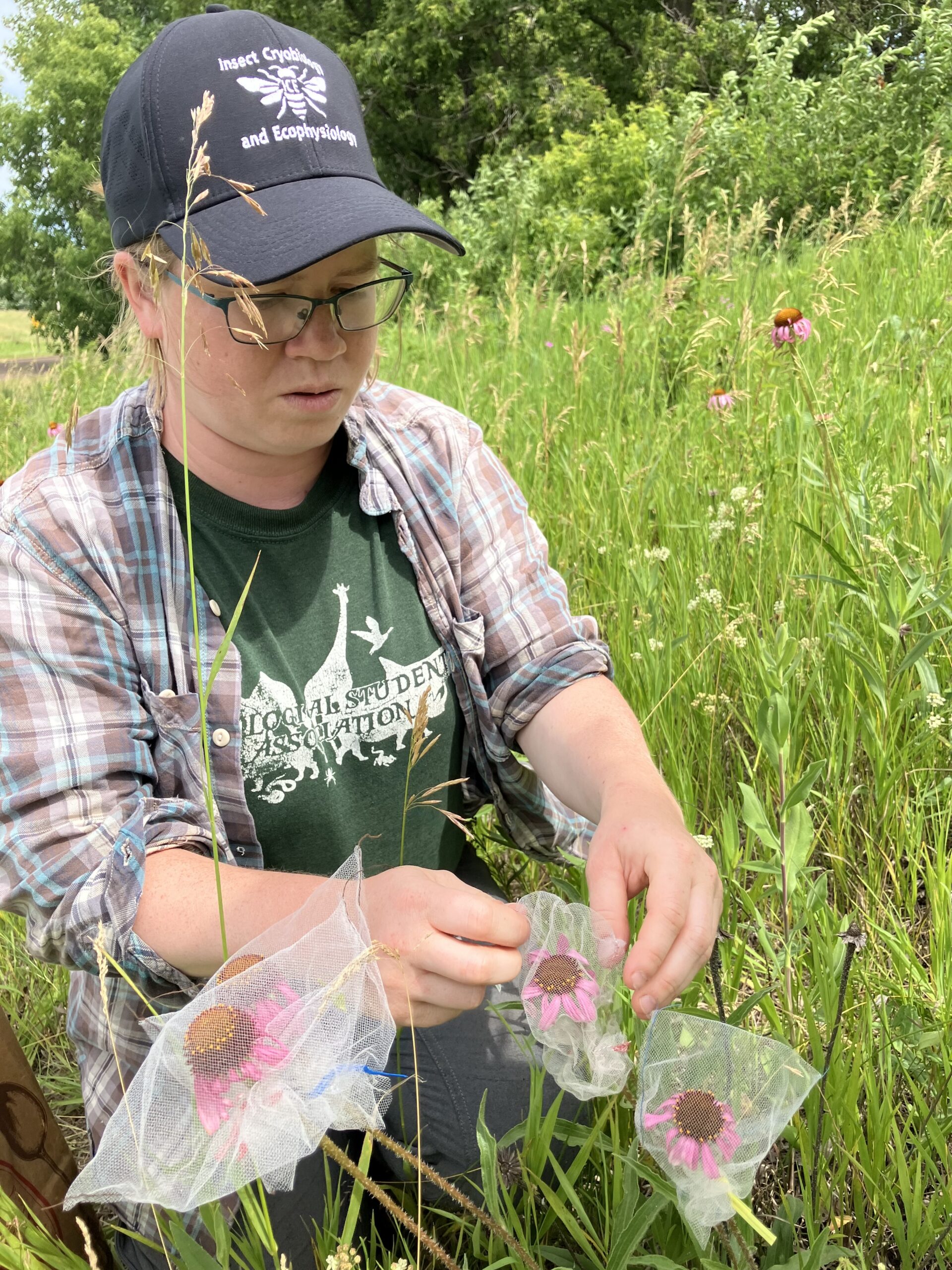Reproduction in plants can be limited by access to pollen and resources. We previously found that Echinacea plants in the remnants are pollen limited, meaning that if they had access to more pollen, they would produce more seeds. However, the long-term effects of pollen limitation are unknown. Do plants that are super pollen saturated and have high amounts of pollen have a higher lifetime fitness than plants that are pollen limited? Also, we know that the plants in the remnants are pollen limited, but are the plants in the common garden environment also pollen limited? To answer these questions and more, 13 years ago Gretel randomly selected 39 plants from p1; half of these plants were randomly assigned to the pollen addition group, and the others were assigned to pollen exclusion. Every year, plants in the pollen exclusion have their heads bagged and they are not pollinated, while we hand cross every style in the pollen addition group. An additional 53 plants in p1 were selected to be part of a control group where pollen was neither added nor excluded.
In the summer of 2024, NONE of the original 39 addition/exclusion plants were flowering. If any had been flowering, the exclusion treatment plants would be covered with exclusion bags to prevent pollination, and the addition plants would be hand-pollinated multiple times throughout the summer. One plant in the control group produced a single flowering head.

- Start year: 2012
- Location: exPt01
- Overlaps with:
- Data collected:
- Plant survival and measurements were recorded as part of our annual surveys in P1 and eventually will be found in our SQL database.
- Physical specimens:
- One head from the control plants. AC-1715 is in the exPt01 2024 batch at the Chicago Botanic Garden awaiting processing.
- Products:
- Michael LaScaleia’s poster, presented at MEEC 2019
- Tris Dodge’s poster, presented at MEEC 2019
- Sophia Chen’s poster, presented at the Lake Forest College Glassman Symposium
You can find more information about the pollen addition and exclusion experiment and links to previous flog posts regarding this experiment at the background page for the experiment.

Leave a Reply